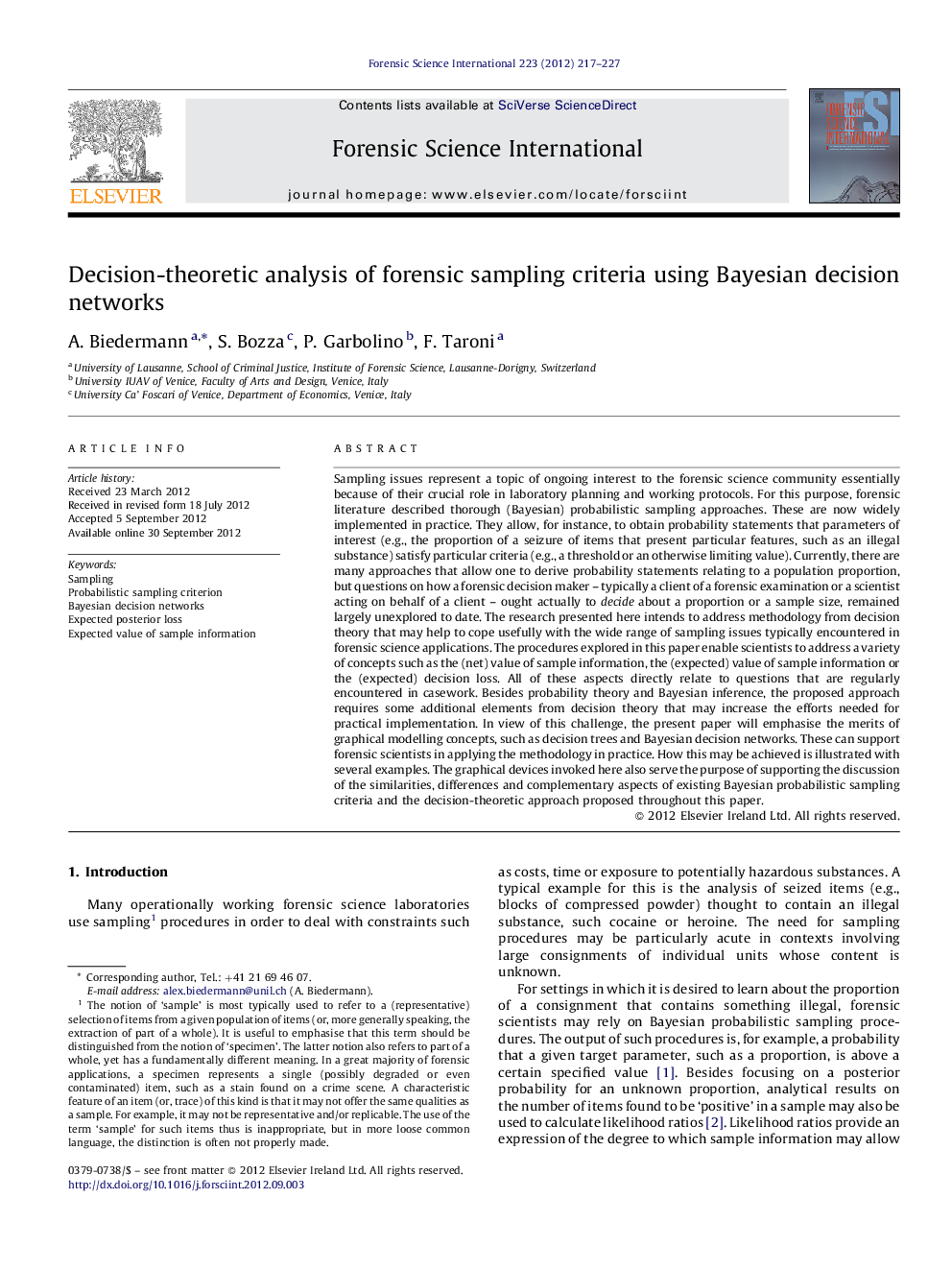| کد مقاله | کد نشریه | سال انتشار | مقاله انگلیسی | نسخه تمام متن |
|---|---|---|---|---|
| 96369 | 160462 | 2012 | 11 صفحه PDF | دانلود رایگان |

Sampling issues represent a topic of ongoing interest to the forensic science community essentially because of their crucial role in laboratory planning and working protocols. For this purpose, forensic literature described thorough (Bayesian) probabilistic sampling approaches. These are now widely implemented in practice. They allow, for instance, to obtain probability statements that parameters of interest (e.g., the proportion of a seizure of items that present particular features, such as an illegal substance) satisfy particular criteria (e.g., a threshold or an otherwise limiting value). Currently, there are many approaches that allow one to derive probability statements relating to a population proportion, but questions on how a forensic decision maker – typically a client of a forensic examination or a scientist acting on behalf of a client – ought actually to decide about a proportion or a sample size, remained largely unexplored to date. The research presented here intends to address methodology from decision theory that may help to cope usefully with the wide range of sampling issues typically encountered in forensic science applications. The procedures explored in this paper enable scientists to address a variety of concepts such as the (net) value of sample information, the (expected) value of sample information or the (expected) decision loss. All of these aspects directly relate to questions that are regularly encountered in casework. Besides probability theory and Bayesian inference, the proposed approach requires some additional elements from decision theory that may increase the efforts needed for practical implementation. In view of this challenge, the present paper will emphasise the merits of graphical modelling concepts, such as decision trees and Bayesian decision networks. These can support forensic scientists in applying the methodology in practice. How this may be achieved is illustrated with several examples. The graphical devices invoked here also serve the purpose of supporting the discussion of the similarities, differences and complementary aspects of existing Bayesian probabilistic sampling criteria and the decision-theoretic approach proposed throughout this paper.
Journal: Forensic Science International - Volume 223, Issues 1–3, 30 November 2012, Pages 217–227